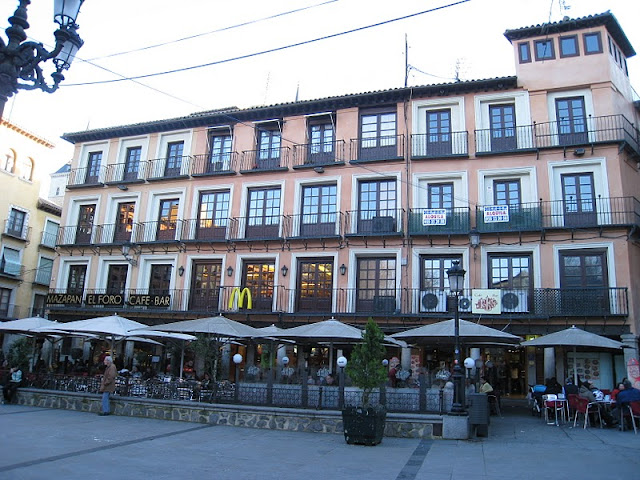Around 1577, El Greco, an outspoken and flamboyant Greek painter in his mid-30s, journeyed to Spain to seek his fortune. In time his adopted land would claim him as one of its greatest artists, and the identities of El Greco (The Greek) and Toledo would become closely linked.
Suspended between heaven and earth, Toledo, Spain's spiritual heart, has changed little from the day the Greek painter El Greco arrived in the 1570s.
Toledo is a municipality located in central Spain, 70 kilometers south of Madrid, the capital of Spain. It is the capital of the province of Toledo. It is also the capital of the autonomous region of Castile-La Mancha. It was declared a World Heritage Site by UNESCO in 1986 for its extensive cultural and monumental heritage as one of the former capitals of the Spanish Empire and place of coexistence of Christian, Jewish and Muslim cultures.
Many famous people and artists were born or lived in Toledo, including Al-Zarqali, Garcilaso de la Vega, Eleanor of Toledo, King Alfonso X, and El Greco. It was also the place of important historic events such as the Visigothic Councils of Toledo. As of 2010, the city has a population of 82,489 and an area of 232 square kilometers (89.6 square miles).
Having been populated since the Bronze age, Toledo (Toletum in Latin) grew in importance during the Roman times, being a main commercial and administrative centre in the Roman province of Tarraconensis. After the fall of the Roman Empire, Toledo served as the capital city of Visigothic Spain, beginning with King Liuvigild (Leovigild), and was the capital of Spain until the Moors conquered Iberia in the 8th century.
Under the Caliphate of Cordoba, Toledo enjoyed a golden age. It became a very large cosmopolitan city with an overwhelming Muladi population. This extensive period is known as La Convivencia, i.e. the co-existence of Jews, Christians and Muslims. Under Arab rule, Toledo was called Tulaytulah. After the fall of the Caliphate, Toledo was the capital city of one of the richest Taifas of Al-Andalus. Its population was overwhelmingly Muladi., and, because of its central location in the Iberian Peninsula, Toledo took a central position in the struggles between the Muslim and Christian rulers of northern Spain. The conquest of Toledo by King Alfonso VI of Castile marked the first time a major city in Al-Andalus had fallen to Christian forces; it served to sharpen the religious aspect of the Christian reconquest.
The manufacture of swords in the city of Toledo goes back to Roman times, but it was under Moorish rule and during the Reconquista that Toledo and its Guild of Sword-makers played a key role. Between the 15th and 17th centuries the Toledo sword-making industry enjoyed a great boom, to the point where its products came to be regarded as the best in Europe Swords and daggers were made by individual craftsmen, although the Sword-makers Guild oversaw their quality.
On May 25, 1085, King Alfonso VI of Castille took Toledo and established direct personal control over the Moorish city from which he had been exacting tribute, ending the medieval Taifa's Kingdom of Toledo. This was the first concrete step taken by the combined kingdom of Leon-Castile in the Reconquista by Christian forces. After Castilian conquest, Toledo continued to be a major cultural centre; its Arab libraries were not pillaged, and a tag-team translation centre was established in which books in Arabic would be translated from Arabic or Hebrew to Spanish by Arab and Jewish scholars, and from Spanish to Latin by Castilian scholars, thus letting long-lost knowledge spread through Christian Europe again.
For some time during the 16th century, Toledo served as the capital city of Castile, and the city flourished. However, soon enough the Spanish court was moved, first to Valladolid and then to Madrid, thus letting the city's importance dwindle until the late 20th century, when it became the capital of the autonomous community of Castile-La Mancha. Nevertheless, the economic decline of the city helped to preserve its cultural and architectural heritage. Today, because of this rich heritage, Toledo is one of Spain's most popular tourist destinations.

















































































These are fantastic pictures. I had a brief visit to Toledo in 2013, staying only one day with a tour group. These photos helped me realize that I must go back and stay a couple of nights and enjoy more of the historical sites and ambiance of the city.
ReplyDelete